BY 124L - Plant Anatomy
1/74
There's no tags or description
Looks like no tags are added yet.
Name | Mastery | Learn | Test | Matching | Spaced |
|---|
No study sessions yet.
75 Terms
What are the characteristics of the shoot system?
contains leaves for photosynthesis, stem supports plant and transports water and minerals by vascular system, flowers for reproduction, divided into nodes and internodes, terminal/apical bud and lateral/ axillary buds for growth
What is node?
where shoots connect
What are internodes?
space between the nodes
What is the root system?
anchors plant and stores nutrients, brings in water and minerals (root hairs); includes adventitious, taproots, and fibrous roots
What are adventitious roots?
extra roots from soil; form stems (strawberry)
What are taproots?
underground; in dicots, tapering root (shrubs, carrot)
What are fibrous roots?
underground; in monocots, thin, spread-out roots (grasses)
What are parenchyma cells?
least specialized, no secondary cell wall, thin primary cell wall, holds water and stores nutrients in vacuole, location of most of metabolism to support the plant
What are collenchyma cells?
no secondary cell wall, more rigid primary cell wall compared to parenchyma cells, important in support of young plants and stems of nonwoody (herbaceous) plants, capable of elongation
What are sclerenchyma cells?
primary cell wall is cellulose and secondary cell wall has lignin; dead tissue, but important in support; produced through mitosis, found in areas that have stopped growing
What is epidermis?
type of dermal tissue; general function is protection, but can have a more specific function; single layer of tightly packed cells, effectively the skin of the plant; leaves and sometimes stems can have a cuticle
What is the periderm?
type of dermal tissue; replaces epidermis during secondary growth; the cork and cork cambium; dead tissue; arises form ground meristem
What is cork?
bark
What is cork cambium?
makes the cork
What are the two types of vascular tissue?
xylem and phloem
What is xylem?
dead at maturity, transports water up from the roots, contains tracheids and vessel elements in angiosperms
How does water move up in xylem since xylem is dead?
tracheids and vessel elements keep water moving
What is phloem?
transports sucrose and some mineral ions throughout the plant, both up and down; contains sieve tube cells and companion cells (helper cells)
What is ground tissue?
can be referred to as pith or cortex depending on location; usually made of parenchyma cells, located between dermal and vascular tissues, acts in photosynthesis, storage, and support
What are the two types of growth in plants?
indeterminate and determinate
What is indeterminate growth?
continues throughout the entire life of the organism; in plants, occurs at the meristems via mitosis and cell elongation
What is determinate growth?
occurs until the organism reaches a certain size; in humans, occurs in long bones until maturity is reached during the mid-to-late teens up to the early twenties
What are the meristematic tissue types?
protoderm, procambium, and ground meristem
What is protoderm?
gives rise to epidermal tissue
What is procambium?
gives rise to vascular tissue
What is ground meristem?
gives rise to ground tissue and periderm
What is the apical meristem?
located at both shoot tip and the root tip; responsible for primary growth
What is the root cap?
protects apical meristem of the root; secretes a slimy substance to help lubricate the root as it moves through the soil
What is the lateral meristem responsible for?
secondary (width) growth form the cork cambium in woody, perennial dicots
How does the periderm replace the epiderm?
cork cambium produces phelloderm and cork as well as suberin (waxy substance) that is added to cork cells; all makes up periderm
What does bark describe?
periderm and the phloem
What is the zone of cell differentiation/maturation?
major tissue types are present in this region; contains root hairs and lateral roots
What is the zone of elongation?
cells in this region take in water and elongate
What is the zone of cell division?
growth of this region is done by mitosis
What is an annual life cycle?
take a year or less to go from germination to flowering to death
What is a biennial life cycle?
generally live two years, with vegetative growth in 1st year and flowering in 2nd year
What is a perennial life cycle?
live for many years and usually die from disease or injury instead of from old age
What is the difference in monocots and eudicots regarding cotyledons?
one vs. two
What is the difference in monocots and eudicots regarding leaf venation?
veins are usually parallel vs. veins are usually netlike
What is the difference in monocots and eudicots regarding stems?
vascular tissue scattered vs. vascular tissue usually arranaged in ring
What is the difference in monocots and eudicots regarding roots?
root system usually fibrous (no main root) vs. taproot (main root) usually present
What is the difference in monocots and eudicots regarding pollen?
pollen grain with one opening vs. pollen grain with three openings
What is the difference in monocots and eudicots regarding flowers?
floral organs usually in multiples of three vs. multiples of four or five
What are monoecious plants?
flowers have both stamens and a carpel (hermaphroditic)
What are dioecious plants?
flowers either have stamens or have a carpel; single plant may or may not have both types of flowers
What are perfect flowers?
have both stamens and carpel; has to be monoecious
what are imperfect flowers?
have either stamens or a carpel; has to be dioecious
What are complete flowers?
have sepals, petals, stamens, and carpel; has to be monoecious
What are incomplete flowers?
missing at least a sepals, petals, stamens, or carpel; can be either monoecious or dioecious
What is aggregate?
raspberry and blackberry
What is multiple?
pineapple, mulberry, fig
What is pome?
apple and pear
What is drupe?
cherry, peach, almond, olive
What is legume?
beans, peas, soybeans, peanut
What is hesperidium?
orange, lemons, grapefruit
What is pepo?
squash, cucumber, watermelon
What is berry?
grape, peppers, tomato
What is grain?
wheat, corn, rice
What is achene?
sunflower
What is accessory?
strawberry
What is nut?
ACORN, oak, hickory
What is sumara?
ash, maple, elm
What is capsule?
okra
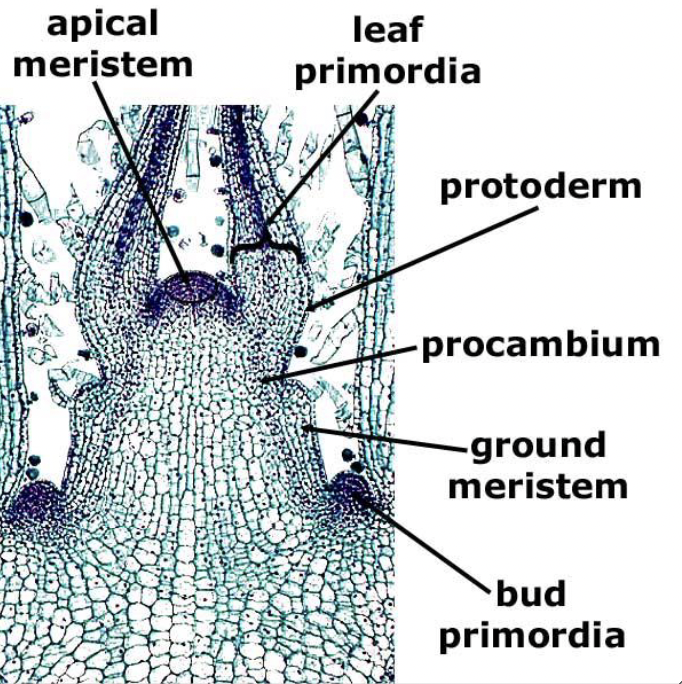
What is this
Coleus stem tip

What is this?
Pyrus root tip
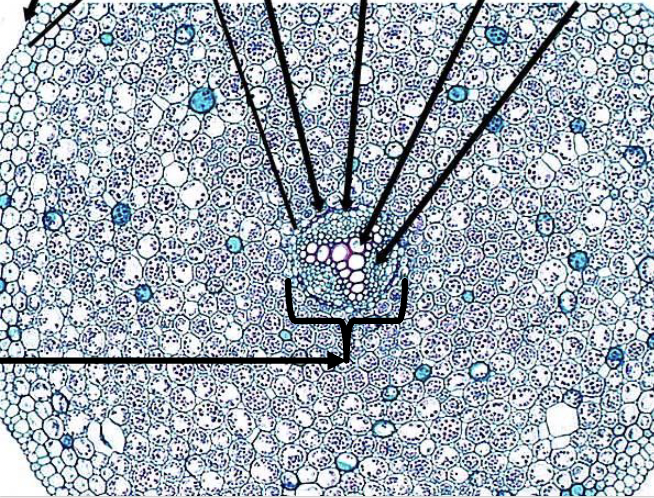
What is this?
Ranunculus root; dicot root
How can you tell the difference between a dicot and a monocot in a slide?
peace sign stele in dicot and and plus sign stele in monocot; monocot has large endodermis
How can you tell the difference between a stem and a root in a slide?
only roots have stele and endoderm
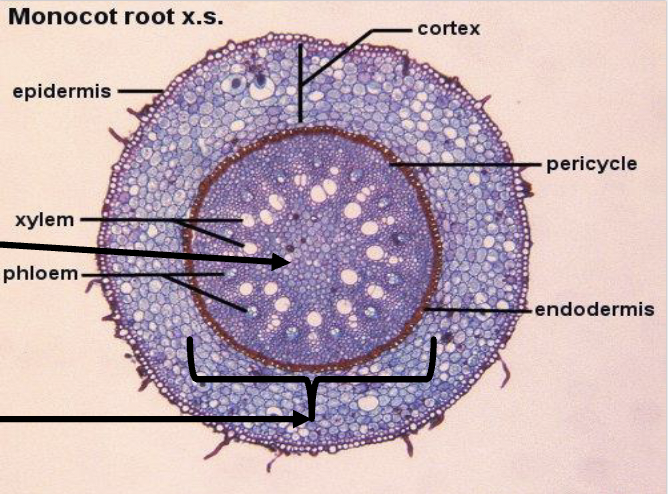
What is this
Zea root; monocot root
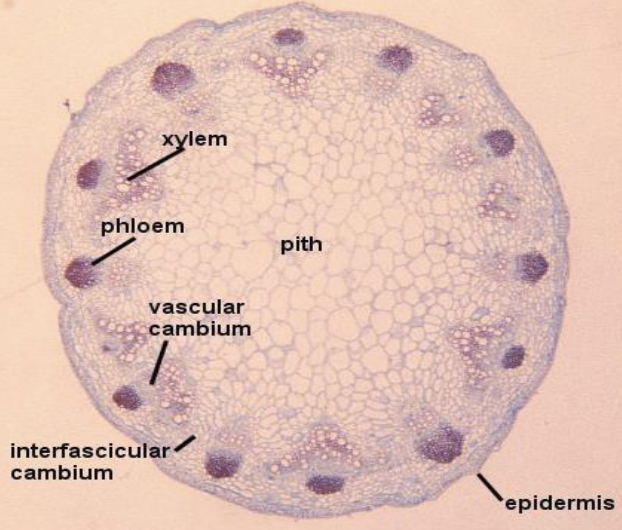
What is this?
Helianthus stem; dicot stem
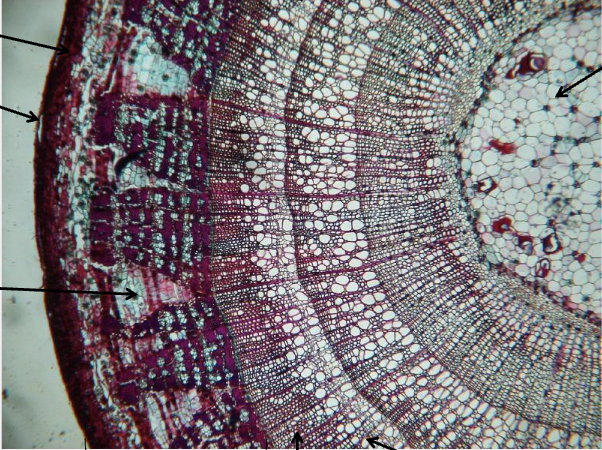
What is this?
Tilia woody stem; woody dicot stem
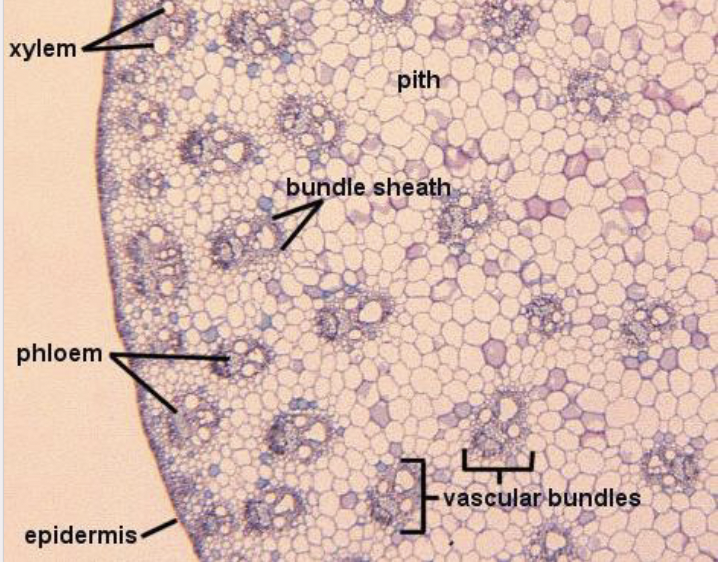
What is this?
Zea mays stem; monocot stem
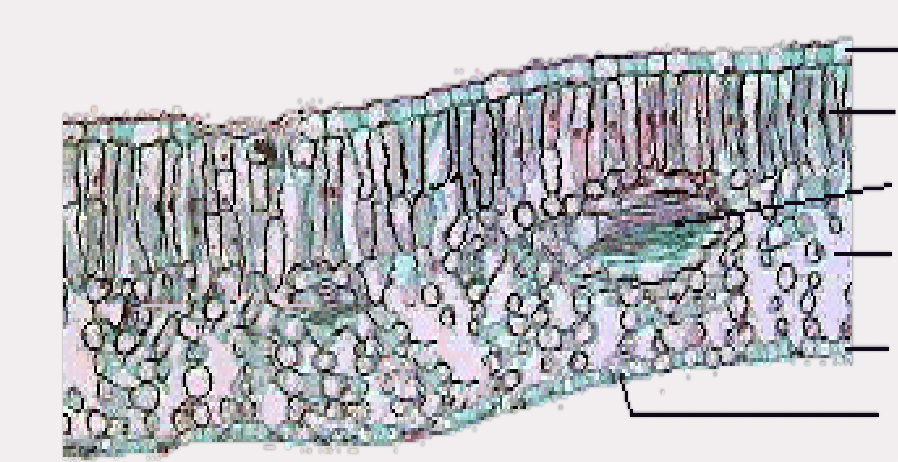
What is this?
Syringia leaf; dicot
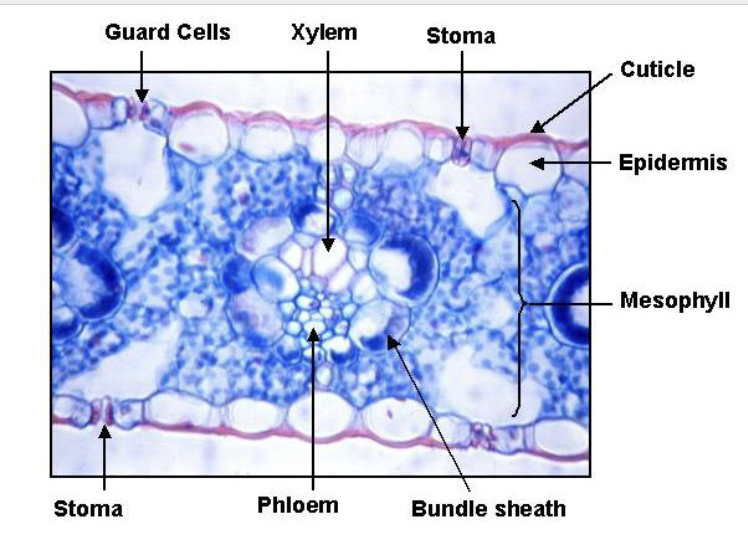
What is this?
Zea leaf; monocot leaf
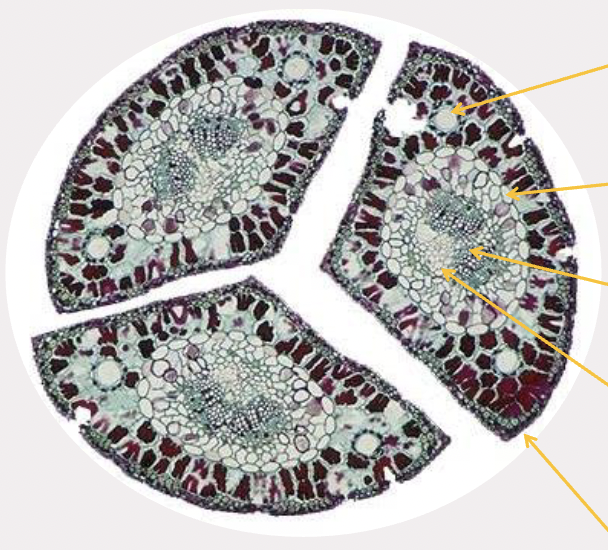
What is this?
Pinus leaf; Phylum Coniferophyta